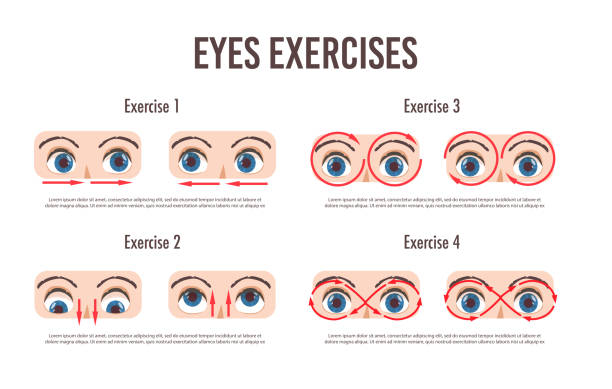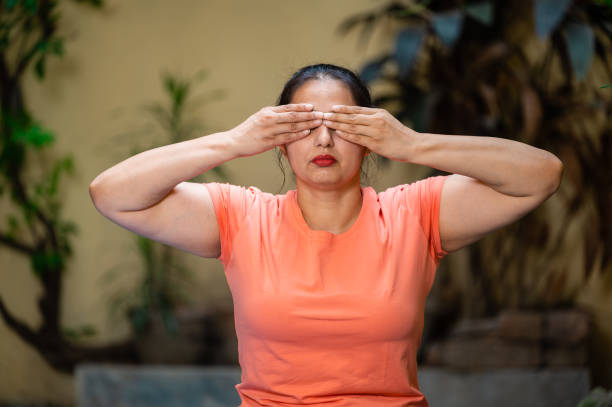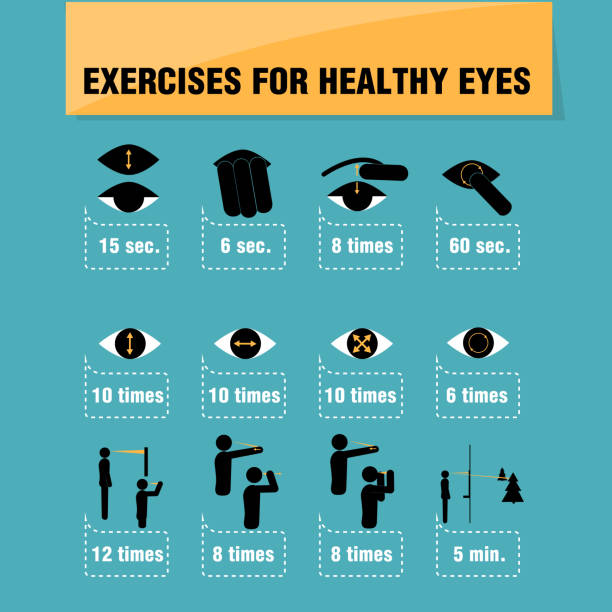Good vision is essential for a healthy and productive life, allowing us to perform daily tasks with ease and comfort. However, with the increasing use of digital screens—whether for work, entertainment, or communication—many people experience issues such as eye strain, blurred vision, and general discomfort. This has led to growing interest in natural ways to support eye health, including eye exercises. But can these exercises actually make a difference? While they may not replace the need for prescription glasses or contact lenses, regular eye exercises can help reduce strain, improve focus, and support overall eye function. Let’s explore the potential benefits of eye exercises and whether they can truly enhance your vision.
What Are Eye Exercises?
Eye exercises are simple yet effective movements designed to strengthen the muscles around your eyes, enhance focus, and improve coordination. Just like regular physical workouts help keep your body strong and flexible, these exercises aim to support overall eye health and visual comfort. They can be particularly beneficial for individuals who spend long hours staring at screens, reading, or working on detailed tasks, as these activities can cause digital eye strain, dryness, and fatigue. By incorporating eye exercises into your daily routine, you may experience improved eye endurance, reduced discomfort, and better visual efficiency in tasks that require prolonged focus.
Common Causes of Eye Strain

Eye strain has become a common issue in today’s digital world. Some major causes include:
- Extended Screen Time: Spending hours looking at a computer or phone screen can overwork your eyes.
- Poor Lighting: Reading or working in dim light forces your eyes to work harder.
- Improper Posture: Sitting too close to a screen or at an awkward angle can contribute to discomfort.
- Lack of Breaks: Not giving your eyes a rest can lead to fatigue and headaches.
Addressing these issues is key to reducing strain, and eye exercises can complement these efforts.
How Eye Exercises Benefit Your Vision
While eye exercises may not cure serious vision problems like nearsightedness or farsightedness, they do offer several advantages for eye health:
1. Relieving Eye Strain
Performing eye exercises can relax tired muscles and reduce discomfort caused by prolonged screen use. This can help prevent burning, dryness, or irritation.
2. Improving Focus
Some exercises can train your eyes to switch focus more efficiently between near and distant objects. This is especially useful for people who struggle with blurred vision when shifting focus.
3. Enhancing Coordination
Your eyes work as a team to provide clear vision. Eye exercises can improve coordination between them, reducing issues like double vision.
4. Boosting Circulation
Gentle movements during eye exercises increase blood flow to the area, delivering more oxygen and nutrients to the eyes.
5. Preventing Fatigue
Regular exercises help reduce feelings of tiredness and heaviness around the eyes, making it easier to focus for longer periods.
Simple Eye Exercises to Try

Here are some easy exercises you can incorporate into your daily routine:
1. The 20-20-20 Rule
This popular exercise is a lifesaver for anyone who spends a lot of time in front of screens. Every 20 minutes, look at something 20 feet away for 20 seconds. It helps reduce strain and gives your eyes a quick break.
2. Focus Shifting
Hold your finger about 10 inches away from your nose. Focus on your finger, then shift your focus to an object in the distance. Repeat this 10 times. It’s a great way to improve focus and flexibility.
3. Eye Rolling
Roll your eyes in a circular motion—first clockwise, then counterclockwise. This exercise helps relax eye muscles and improve blood circulation.
4. Figure Eight
Visualize an imaginary figure eight about 10 feet in front of you. Trace the shape with your eyes for 30 seconds, then switch directions. This exercise enhances coordination and flexibility.
5. Palming

Rub your hands together to warm them up, then place them gently over your closed eyes. Let the warmth and darkness relax your eye muscles for a minute or two.
Who Can Benefit From Eye Exercises?
Eye exercises are beneficial for a wide range of people, including:
- Office Workers: Those who stare at screens for long periods.
- Students: Reading and studying for hours can strain the eyes.
- Drivers: Long drives require intense focus, which can lead to fatigue.
- Elderly Individuals: Exercises can help maintain eye mobility and flexibility.
Can Eye Exercises Improve Vision Long-Term?
Eye exercises are not a replacement for corrective lenses or medical treatments for conditions like nearsightedness, farsightedness, or astigmatism. However, they can improve the comfort and function of your eyes, especially for tasks that cause strain.
Some programs, like vision therapy, may also include eye exercises as part of a broader treatment plan for certain conditions. These therapies are typically guided by an eye specialist and aim to address issues like lazy eye or convergence insufficiency.
Tips for Maintaining Healthy Vision
While eye exercises can help, there are additional steps you can take to protect your vision:
- Take Regular Breaks: Follow the 20-20-20 rule to give your eyes a rest.
- Blink Often: Blinking keeps your eyes moist and prevents dryness.
- Use Proper Lighting: Avoid working in dim or overly bright settings.
- Adjust Screen Settings: Reduce glare and adjust brightness to a comfortable level.
- Stay Hydrated: Drinking enough water supports overall eye health.
- Eat Eye-Healthy Foods: Include foods rich in vitamins A, C, and E, as well as omega-3 fatty acids.
When to See an Eye Doctor
If you experience persistent eye pain, blurry vision, or headaches, it’s time to see an eye doctor. These could be signs of an underlying issue that requires professional attention. Regular checkups are essential for maintaining good vision and catching problems early.
Conclusion
Eye exercises can be a simple and effective way to reduce strain, improve focus, and keep your eyes feeling fresh. While they may not eliminate the need for glasses or contacts, they can play a role in supporting overall eye health. Combine exercises with good habits like taking breaks, eating nutritious foods, and seeing your eye doctor regularly for the best results.
Start practicing these exercises today, and give your eyes the care they deserve!

